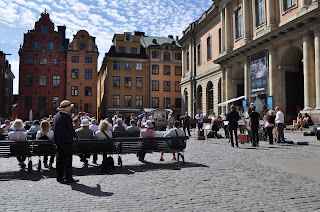I am off to the USA next week. It's been eight years since my last visit and I am looking forward to catching up. I thought I would share some impressions from our last visit (2007) with my children, aged 14 and 10.
As soon as we stepped out of the taxi-cab, we were assailed by neon
lights and sky-high billboards screaming for attention from entire sides of
buildings. Electronic adverts for Foot Locker, Swatch, Virgin Mobile and Lucky
Brand jeans, flickered in competition with announcements for Dancing with the
Stars, Ultimate Fighting Championships and Stomp.
Towers of glass and concrete intersected at multi-lane crossroads of
streaming yellow taxis, thick crowds of humans, blinding lights and the noise
of a city on the go. I was reminded of how cosmopolitan the people in New York
were. They appeared to have come from all over the world, each with a different
dream. They were quirky with wild hairstyles, coiffed and business-like,
strange, daring, downright weird, designer-heeled, sneaker-wearing, grey and
colourful. No wonder people were prompted to do anything to be noticed, like
don cowboy boots and a hat to play guitar naked in the traffic.
On our first trip with my daughter 13 years earlier, we’d been on
our way down Fifth Ave, when we noticed a crowd gathering on the sidewalk, at
the traffic lights opposite Van Cleef and Arpels. The large woman’s loud yellow
shirt and gaudy floral tights were enough to cause a stir but it took me a few
moments to realise that it was the python she had draped around her shoulders
which was gathering attention.
New Yorkers, with mobiles glued to the sides of their faces,
briefcases in hand, strode purposefully along sidewalks or streamed across the
road, in obeisance to the flashing “Walk-Don’t Walk” signals. I recalled how
curious a similar sight of businessmen accessorised with mobile phones had been
on our visit in 1994. Two cell phone network providers, Vodacom and MTN, had
only just been granted licences to operate in South Africa. We were a long way
off from embracing cell phone technology and it seemed strange to me then that
it could be such an indispensable part of American lives.
"This is just like in the movies,” my daughter remarked, as she
slowly turned around on the sidewalk to take in the familiar sights. America
was in our living room every day. This was where movies were made. She knew
what Americans looked like, how they talked, hailed taxis, ate, ordered coffee,
and fell in love. She thought all telephone calls started with “area code 555”
and recognised the sound of police sirens. I’d fought to limit their exposure
to television and find the balance with reading and outdoor activities, and yet
she could rattle off names and intimate details of a string of actors. I joked
that if her school work could be made into a movie, she'd be top of her
class.
The extract above is from my MA thesis.
Image by Gail Lindgren from http://www.freeimages.com/















































